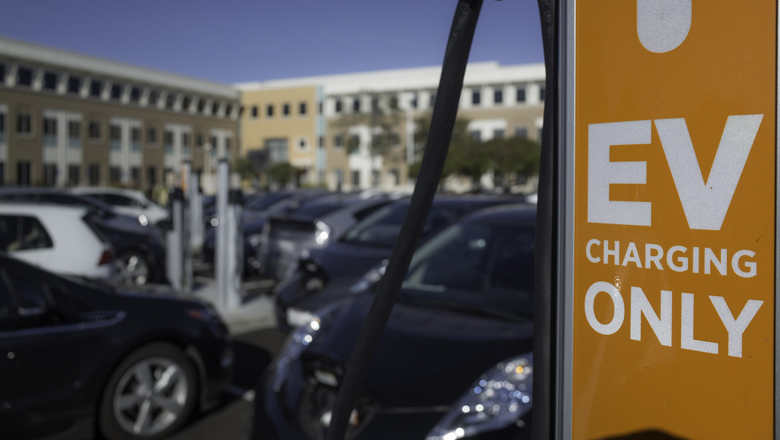
Throwback Thursday: Electric Car Set Speed Record — in 1901

Sure, electric and hybrid powered cars have been growing in popularity since the early 1990s. But electric cars have been around much longer than you might think.
In 1901, 115 years ago this week, Andrew Riker’s electric powered race car broke records as the fastest electric car of its time. Reaching speeds of 57 miles per hour, the “torpedo racer” wasn’t the first Riker machine to win a race. In 1896, a Riker car also won the first official U.S. automobile race.
In the early 1900s, electric cars made up a third of all the non-horse-driven transportation. As more people gained access to electricity, their popularity was on the upswing — that is, until Ford’s Model T was introduced in 1908.
Before the release of the Model T, cars varied widely between steam, gas and electric power. However, the Model T was much cheaper to make than the standard electric car — $650 vs. $1750 in 1912, according to Energy.gov. This, as well as improved road systems and cheap fuel, resulted in gasoline powered automobiles dominating the market for the better part of the century. The late 1960s to early 1970s brought us a gas shortage, prompting Congress to pass the Electric and Hybrid Vehicle Research, Development, and Demonstration Act of 1976. But it wasn’t until the Clean Air Act of 1990 and the Energy Policy Act of 1992 that interest in electric vehicles truly was revived.
Despite the renewed demand for electric cars in the decades following the environmentally conscious acts of the early ’90s, the auto industry struggled to create electric cars on par with the current gas-powered models. Unfortunately, the costs outweighed the expected profits and many attempts were scrapped, inspiring the 2006 documentary “Who Killed the Electric Car.”
Despite the problems with electric cars, including a lack of infrastructure for long trips, the demand for cleaner vehicles only grew stronger. Because of this, the first widely sold electric vehicle was actually the Toyota Prius, a hybrid car. Released in 1997, the Prius was the first mass produced hybrid electric automobile, running on both conventional gas and an electrically charged battery. The Prius has since sold so well that the market for hybrid and electric cars has only grown since it’s release.
It’s certainly evident in the current pricing of cars. Despite the difference in price between the average electric car and the Model T back in 1908, the gap has narrowed since the release of the Prius. The price for an electric vehicle can range from $23,000 to $35,000, while the average gas-powered vehicle falls within the high side of that bracket at $33,500. Further, the U.S. government offers a rebate (though there is a cap on the number of rebates offered per model) to those who buy electric cars purchased in or after 2010, driving the price even lower.
Though the sustainability and efficiency of electric cars was neglected for more than 60 years, the market has returned full force. As auto companies sell more electric cars, they will build more to meet demand and the market will only keep growing. A cleaner future with fewer gas-based engines on the road is certainly on the horizon.
(Image at top: Facebook has an area in the parking lot at their Menlo Park, Calif., headquarters with electric vehicle charging stations. Photo by Jimmy Baikovicius / Creative Commons)

















